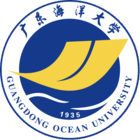详细信息
Responses of the dynamics of particulate organic matter to different track typhoons in coastal waters ( EI收录)
文献类型:期刊文献
英文题名:Responses of the dynamics of particulate organic matter to different track typhoons in coastal waters
作者:Chen, Chunqing[1,2]; Lao, Qibin[1,2]; Zhou, Xin[1,2]; Cai, Shangjun[1,2]; Liu, Sihai[1,2]; Chen, Fajin[1,2,3,4]
机构:[1] College of Ocean and Meteorology, Guangdong Ocean University, Zhanjiang, 524088, China; [2] School of Chemistry and Environment, Guangdong Ocean University, Zhanjiang, 524088, China; [3] Key Laboratory for Coastal Ocean Variation and Disaster Prediction, Guangdong Ocean University, Zhanjiang, 524088, China; [4] Key Laboratory of Climate, Resources and Environment in Continental Shelf Sea and Deep Sea of Department of Education of Guangdong Province, Guangdong Ocean University, Zhanjiang, 524088, China
年份:2025
卷号:272
外文期刊名:Marine Chemistry
收录:EI(收录号:20253318991216)、Scopus(收录号:2-s2.0-105013144745)
语种:英文
外文关键词:Barium compounds - Biogeochemistry - Biological materials - Decay (organic) - Isotopes - Offshore oil well production - Phytoplankton - Storms
外文摘要:The impact of typhoons on marine biogeochemical processes depends on their intensity, track, and speed. However, how particulate organic matter (POM) dynamics respond to typhoons with distinct tracks remains poorly understood. This study investigated physicochemical parameters and stable isotopes of POM (δ13C-POC and δ15N-PN) through continuous observations (one cruise before the typhoon and four cruises after the typhoon, with a 5-day interval) in Zhanjiang Bay following two distinct track typhoons. During Typhoon Lionrock (landfall on the left side of the bay), onshore-wind stress drove high-salinity seawater intrusion, forming a strong salinity front in the bay that suppressed phytoplankton growth (Chl-a decreased by 80 %). In contrast, Typhoon Chaba (landfall on the right side of the bay) generated offshore-wind stress that resulted in weaker water mixing, while abundant terrestrial nutrient input promoted phytoplankton growth (Chl-a increased by two times in the 2nd and 4th cruises after the typhoon). Nevertheless, positive apparent oxygen utilization (AOU) values in the water column were observed after both typhoons, indicating strong decomposition of POM in Zhanjiang Bay. The strongest decomposition (over 80 %) for the two typhoons all occurred after 3 days of the typhoon landfall, and gradually decreased after 8 days of the typhoon landfall. The POM degraded after Typhoon Lionrock mainly originated from resuspended old POM, while from fresh POM (phytoplankton) after Typhoon Chaba. Additionally, the decomposition degree (56 %) induced by Lionrock was stronger than that induced by Chaba (44 %), suggesting that the typhoon landing on the left side of the bay are not conducive to marine carbon burial. ? 2025 Elsevier B.V.
参考文献:
![]() 正在载入数据...
正在载入数据...


